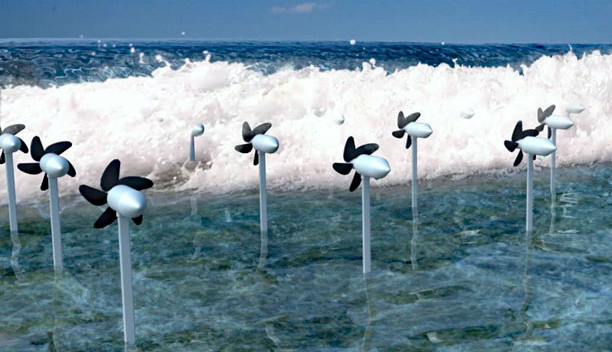Energy from the waves
October 02, 2017
on
on

A research group at the Okinawa Institute of Science and Technology in Japan has been working on submersible turbines to generate electrical energy from ocean currents and waves.
Project ‘Sea Horse’ began in 2012 to capture the energy from the Kuroshio ocean current which runs between the east coast of Taiwan and Japan. This project employs submerged turbines anchored to the seabed absorbing the kinetic energy in the steady sea current and converting it to electrical energy. These initial experiments were very successful and now funding and industry partners are being sought to support the project’s next phase. This employs a new turbine design which is cheaper and more easily accessible for maintenance.
Japan’s extensive coastline was the inspiration for this project; well over 30% of it is protected by large submerged concrete blocks to prevent coastal erosion. These so-called tetrapods simply deflect wave energy, the idea is to replace them or augment their action using intelligent wave-breaker turbines able to absorb wave energy and convert it into electrical energy. Calculations indicate that if only 1% of the Japanese coastline is equipped with these devices, the average power generated would be around 10 GW, enough to replace 10 nuclear-powered power stations. Work started back in 2013 to implement project ‘Wave Energy Converter’ installing the turbines alongside the tetrapods and around coral reefs to generate power and provide coastal protection.
Project ‘Sea Horse’ began in 2012 to capture the energy from the Kuroshio ocean current which runs between the east coast of Taiwan and Japan. This project employs submerged turbines anchored to the seabed absorbing the kinetic energy in the steady sea current and converting it to electrical energy. These initial experiments were very successful and now funding and industry partners are being sought to support the project’s next phase. This employs a new turbine design which is cheaper and more easily accessible for maintenance.
Japan’s extensive coastline was the inspiration for this project; well over 30% of it is protected by large submerged concrete blocks to prevent coastal erosion. These so-called tetrapods simply deflect wave energy, the idea is to replace them or augment their action using intelligent wave-breaker turbines able to absorb wave energy and convert it into electrical energy. Calculations indicate that if only 1% of the Japanese coastline is equipped with these devices, the average power generated would be around 10 GW, enough to replace 10 nuclear-powered power stations. Work started back in 2013 to implement project ‘Wave Energy Converter’ installing the turbines alongside the tetrapods and around coral reefs to generate power and provide coastal protection.
Read full article
Hide full article


Discussion (0 comments)